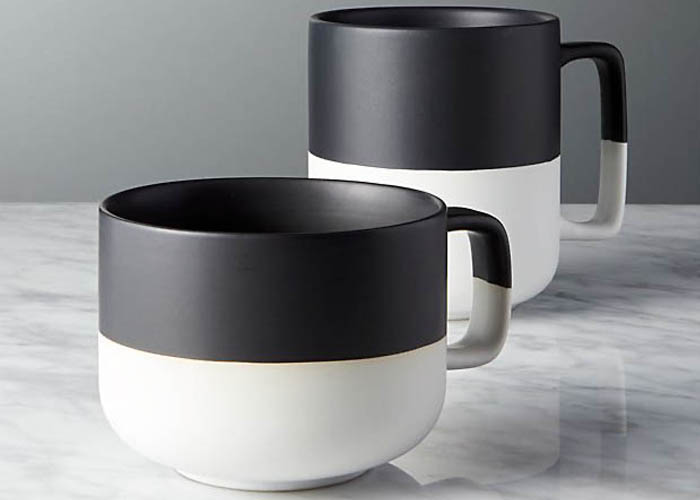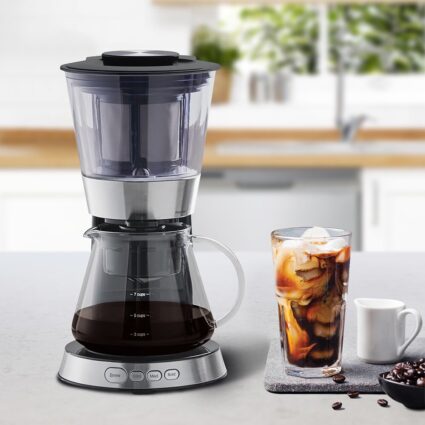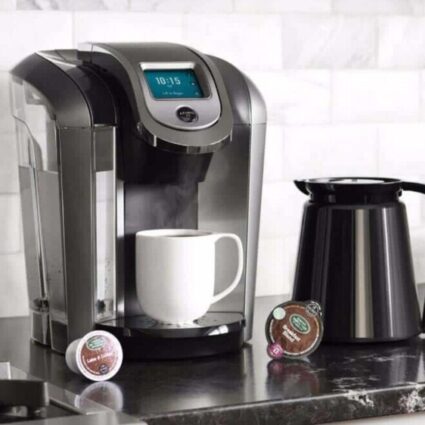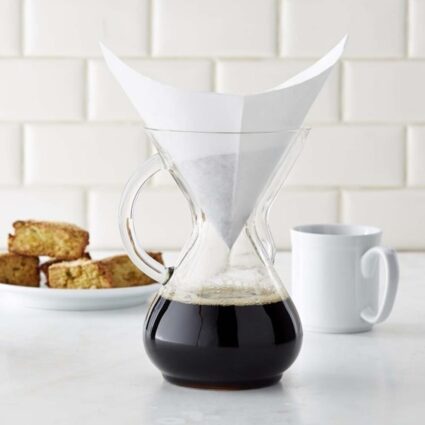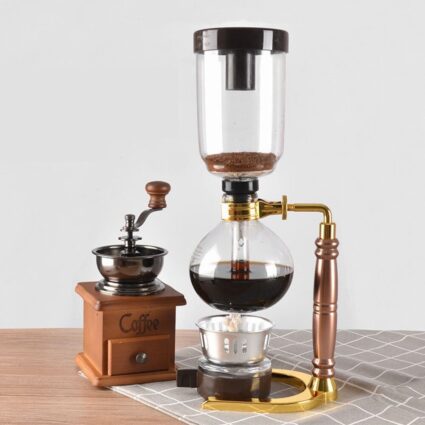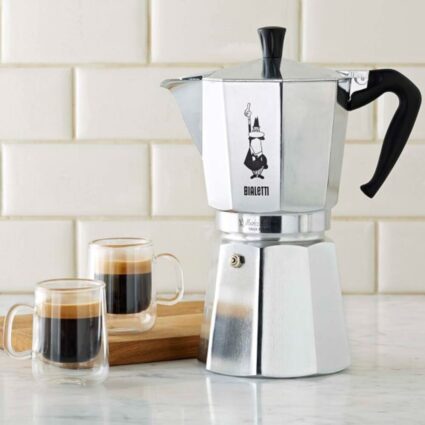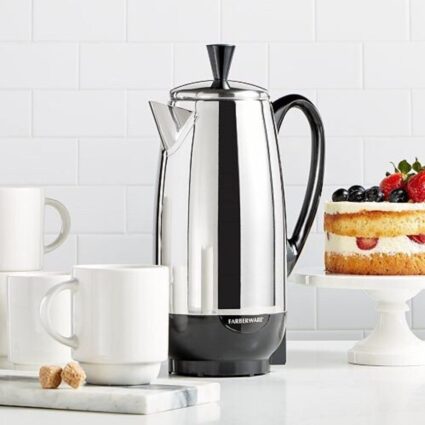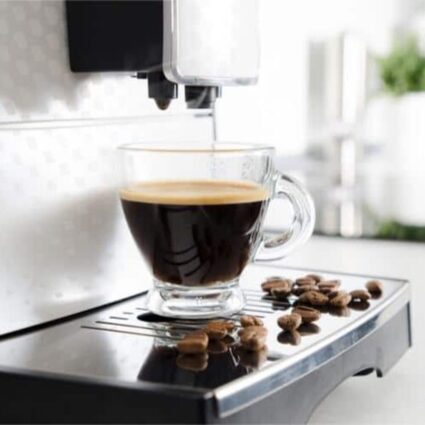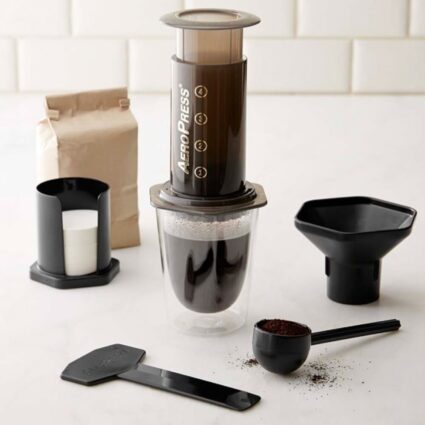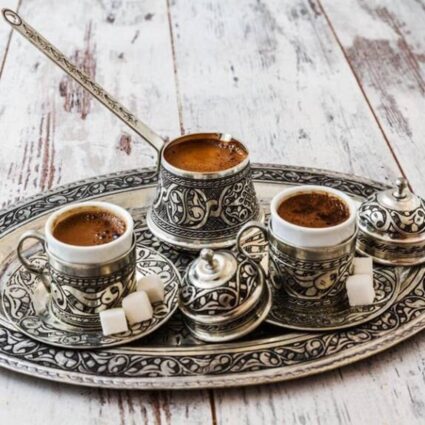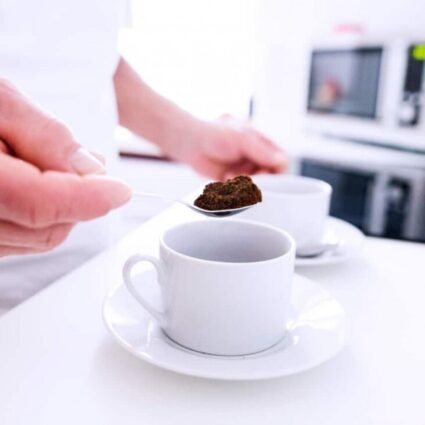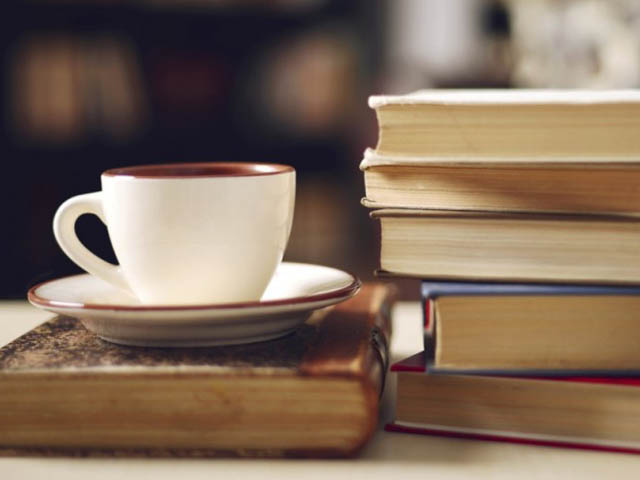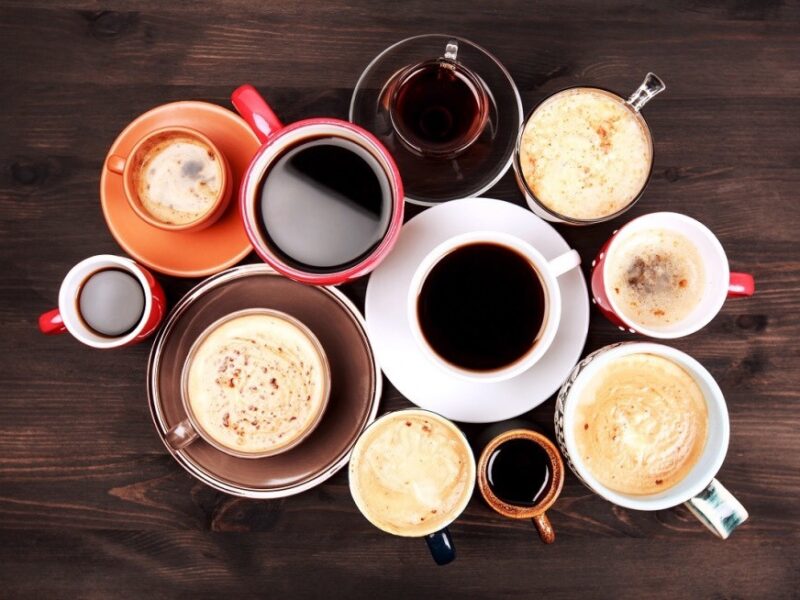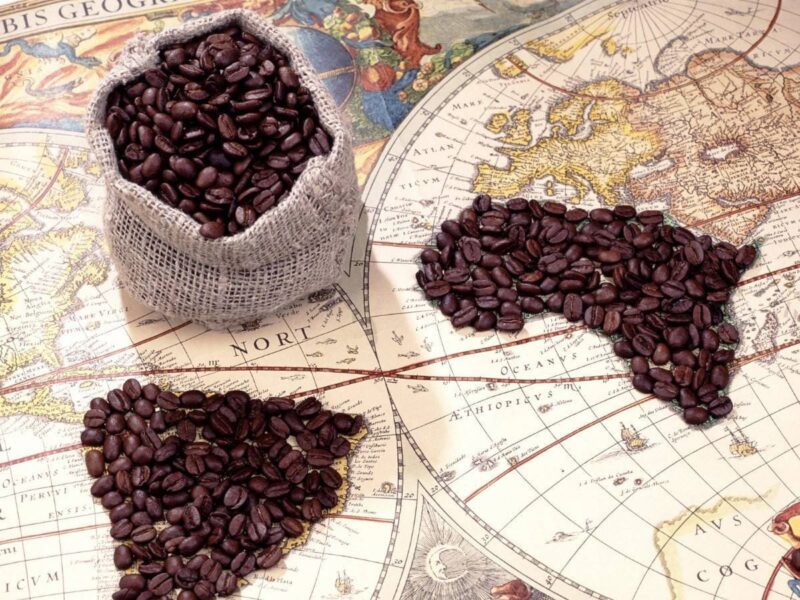ESPRESSO COFFEE
Italy in a palm
Espresso. Both the prepared drink and the preparation method and the appropriate coffee maker are called by this sounding and impressive name.
Literally translated from Italian, Espresso means “Under Pressure”, which is often confused with the unrelated word “Express”.
As the name of coffee suggests, Espresso is prepared with the help of water steam under high pressure. Although the structure of the device is quite complex, the manufacturing technology is based on a very simple principle. Finely ground coffee is measured in a strictly defined amount, poured into a special spoon-like container and leveled. The pressed coffee is then placed in the appropriate rack in the Espresso machine and fixed. Then steam under 9 Bar pressure, passing through the ground coffee, infuses it, separating from it a large amount of caffeine and flavoring substances. The brewing process takes exactly 30 seconds. As a result, 30 ml of drink is obtained, which is collected by piping in a small espresso cup placed under the device. Due to the steam pressure, the very famous golden foam layer is also formed on the coffee.
The espresso machine has gone through a long evolutionary path since its inception to its final form and structure.
The first espresso prototype was designed and patented by Italian engineer Luigi Bezzera in 1901 and put into production by another Italian, industrialist Desiderio Pavoni, in 1903. This device used steam as the main working element for the first time. However, it was significantly different in design from current espresso machines.
In 1947, in Milan, Italy, bartender-inventor Achille Gaggia designed a semi-automatic coffee maker in which the necessary steam pressure was ensured by a special lever.
In 1961, the Company named “Faema” replaced the lever with an electric pump, which made it possible to provide a stable indicator of water steam pressure.
Currently, there are various espresso machines from semi-automatic to so-called super-automatic structures that can provide the complete espresso preparation cycle from the beginning to the end, starting from the grinding of the coffee. There are also manual espresso makers with a very attractive looking.
This drink, once loved by representatives of the European bourgeoisie, is now popular all over the world and is especially prepared in cafes.
Espresso is also the basis for a number of other coffee drinks, such as Cappuccino, Caffe Americano and Caffe Latte.
- Pour finely ground coffee into a special spoon-like handle
- Smooth and press the coffee (to give the espresso a rich taste)
- Insert the handle into the device and fix it
- Preheat the espresso cup
- Place the espresso cup in the bottom of the machine
- Turn on the espresso machine
- Wait 30 seconds
- Serve the finished Espresso
| Coffee Type | 80% Arabica, 20% Robusta |
| Roasting Level | Burned (Italian Roast) |
| Grind Size | Fine Ground (Espresso Coffee) |
| Water Temperature | 9 Bar Pressed Steam: 205 ° Fahrenheit |
| Coffee / Water Ratio | 7 gr coffee / 100 ml water (1 tablespoon for every cup) |
| Preparation Time | 30 seconds |
| Serving Size | 30 ml (1 Fl Oz) |
| Caffeine Amount in 1 Serving | 63 mg |
| Nutritional Value | 2-3 Calories |
| Daily Dosage | No more than 6 Cups |
| Serving Method | – With Cup of Water; -With Milk or Cream; – Cakes and Ice Cream. |
W A R N I N G !
The given numbers are average and may be different from the actual values.
– Espresso can have about 100 different flavors and aromas depending on the type of coffee, the growing conditions, the processing method and the skills of the brewer.
– The ideal volume of 1 cup of espresso is 30 ml. That’s how much coffee should be produced in the 30 seconds, which it takes to make an Espresso.
– Espresso must be served with a glass of water. Water is necessary for cleaning the taste receptors of the drinker so that all the taste properties of Espresso can be felt as well as possible.
– The vast majority of coffee drinks, such as Cappuccino, Antocchino or Latte, are prepared on the basis of Espresso.
– Every year, various events are held around the world where baristas compete with their espresso preparation skills.
Espresso. Both the prepared drink and the preparation method and the appropriate coffee maker are called by this sounding and impressive name.
Literally translated from Italian, Espresso means “Under Pressure”, which is often confused with the unrelated word “Express”.
As the name of coffee suggests, Espresso is prepared with the help of water steam under high pressure. Although the structure of the device is quite complex, the manufacturing technology is based on a very simple principle. Finely ground coffee is measured in a strictly defined amount, poured into a special spoon-like container and leveled. The pressed coffee is then placed in the appropriate rack in the Espresso machine and fixed. Then steam under 9 Bar pressure, passing through the ground coffee, infuses it, separating from it a large amount of caffeine and flavoring substances. The brewing process takes exactly 30 seconds. As a result, 30 ml of drink is obtained, which is collected by piping in a small espresso cup placed under the device. Due to the steam pressure, the very famous golden foam layer is also formed on the coffee.
The espresso machine has gone through a long evolutionary path since its inception to its final form and structure.
The first espresso prototype was designed and patented by Italian engineer Luigi Bezzera in 1901 and put into production by another Italian, industrialist Desiderio Pavoni, in 1903. This device used steam as the main working element for the first time. However, it was significantly different in design from current espresso machines.
In 1947, in Milan, Italy, bartender-inventor Achille Gaggia designed a semi-automatic coffee maker in which the necessary steam pressure was ensured by a special lever.
In 1961, the Company named “Faema” replaced the lever with an electric pump, which made it possible to provide a stable indicator of water steam pressure.
Currently, there are various espresso machines from semi-automatic to so-called super-automatic structures that can provide the complete espresso preparation cycle from the beginning to the end, starting from the grinding of the coffee. There are also manual espresso makers with a very attractive looking.
This drink, once loved by representatives of the European bourgeoisie, is now popular all over the world and is especially prepared in cafes.
Espresso is also the basis for a number of other coffee drinks, such as Cappuccino, Caffe Americano and Caffe Latte.
- Pour finely ground coffee into a special spoon-like handle
- Smooth and press the coffee (to give the espresso a rich taste)
- Insert the handle into the device and fix it
- Preheat the espresso cup
- Place the espresso cup in the bottom of the machine
- Turn on the espresso machine
- Wait 30 seconds
- Serve the finished Espresso
| Coffee Type | 80% Arabica, 20% Robusta |
| Roasting Level | Burned (Italian Roast) |
| Grind Size | Fine Ground (Espresso Coffee) |
| Water Temperature | 9 Bar Pressed Steam: 205 ° Fahrenheit |
| Coffee / Water Ratio | 7 gr coffee / 100 ml water (1 tablespoon for every cup) |
| Preparation Time | 30 seconds |
| Serving Size | 30 ml (1 Fl Oz) |
| Caffeine Amount in 1 Serving | 63 mg |
| Nutritional Value | 2-3 Calories |
| Daily Dosage | No more than 6 Cups |
| Serving Method | – With Cup of Water; -With Milk or Cream; – Cakes and Ice Cream. |
W A R N I N G !
The given numbers are average and may be different from the actual values.
– Espresso can have about 100 different flavors and aromas depending on the type of coffee, the growing conditions, the processing method and the skills of the brewer.
– The ideal volume of 1 cup of espresso is 30 ml. That’s how much coffee should be produced in the 30 seconds, which it takes to make an Espresso.
– Espresso must be served with a glass of water. Water is necessary for cleaning the taste receptors of the drinker so that all the taste properties of Espresso can be felt as well as possible.
– The vast majority of coffee drinks, such as Cappuccino, Antocchino or Latte, are prepared on the basis of Espresso.
– Every year, various events are held around the world where baristas compete with their espresso preparation skills.








